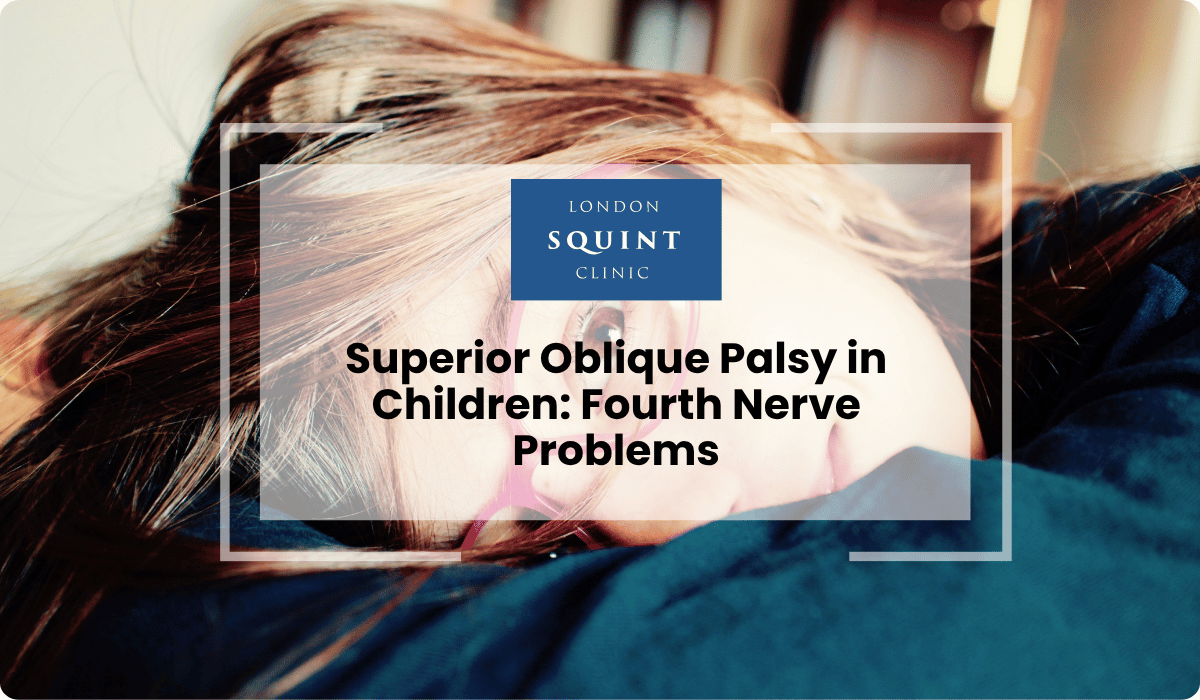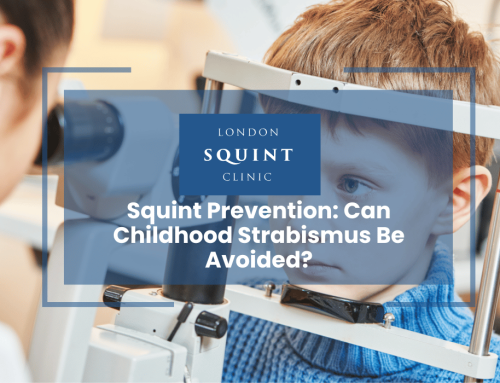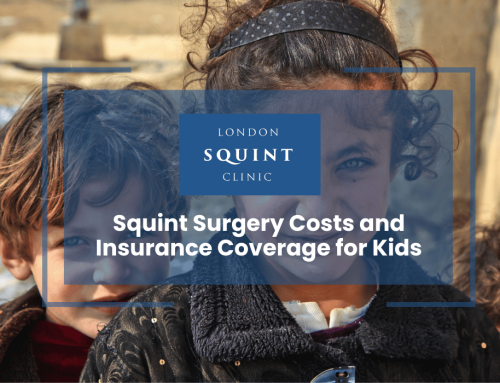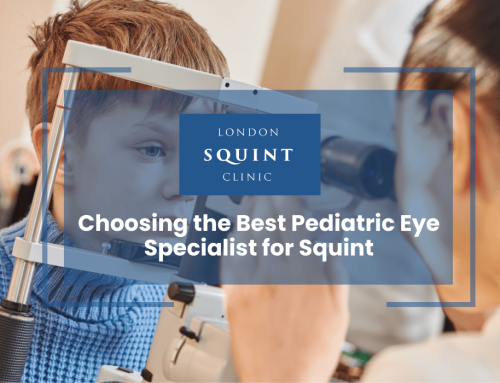Superior Oblique Palsy in Children: Fourth Nerve Problems
Long-term Outlook: Managing Superior Oblique Palsy Over Time
The long-term prognosis for children with superior oblique palsy varies depending on several factors, including the cause, severity, age at diagnosis, and treatment approach. Understanding the developmental trajectory helps families prepare for ongoing management needs.
Developmental Considerations:
- Visual development: The critical period for binocular vision development extends through early childhood. Early intervention increases the chances of achieving normal binocular function.
- Growth-related changes: As children grow, the manifestation of superior oblique palsy may change. Some children experience worsening of alignment with growth spurts, while others may show improvement in compensatory mechanisms.
- Facial development: Untreated significant head tilt can lead to progressive facial asymmetry that becomes more difficult to reverse as the child ages.
Long-term Treatment Outcomes:
- Surgical results: Most children who undergo appropriate surgical correction achieve satisfactory alignment and reduction or elimination of head tilt. Success rates for superior oblique palsy surgery range from 70-85% for single procedures.
- Recurrence: Approximately 15-30% of children may require additional surgery due to undercorrection, overcorrection, or changes in alignment as they grow.
- Binocular vision: Children with congenital superior oblique palsy who receive early treatment often develop good functional binocular vision, though some subtle deficits in depth perception may persist.
Ongoing Management Needs:
Even after successful initial treatment, children with superior oblique palsy benefit from:
- Regular ophthalmological follow-up throughout childhood and adolescence
- Monitoring for changes in alignment, especially during growth spurts
- Vision therapy or exercises to enhance binocular function when appropriate
- Academic accommodations if visual challenges persist
- Psychological support if appearance concerns arise, particularly during adolescence
Transition to Adult Care:
As children with superior oblique palsy reach adulthood, they should understand their condition and be prepared to:
- Communicate their visual history to new healthcare providers
- Recognize symptoms that might indicate changes requiring attention
- Consider potential implications for career choices with high visual demands
- Be aware of possible increased risk of decompensation during times of illness or fatigue
With appropriate management, most children with superior oblique palsy can lead normal lives with minimal functional limitations. The condition rarely affects overall health or life expectancy, and many adults with treated superior oblique palsy experience excellent quality of life with minimal ongoing visual symptoms.
Table of Contents
- Understanding Superior Oblique Palsy: Causes and Symptoms
- Why Does My Child Tilt Their Head? Signs to Watch For
- Diagnosing Fourth Nerve Palsy in Children: Assessment Methods
- Treatment Options for Superior Oblique Palsy in Pediatric Patients
- Living with Trochlear Nerve Problems: Daily Challenges
- When to Seek Specialist Care for Head Tilt in Children
- Long-term Outlook: Managing Superior Oblique Palsy Over Time
Understanding Superior Oblique Palsy: Causes and Symptoms
Superior oblique palsy in children refers to the weakness or dysfunction of the superior oblique muscle, one of the six muscles that control eye movement. This condition is also known as fourth nerve palsy or trochlear nerve palsy, as the fourth cranial nerve (trochlear nerve) controls this particular muscle.
The superior oblique muscle has a unique function—it helps the eye move downward when the eye is turned inward, and it assists with inward rotation of the eye. When this muscle doesn’t function properly, children experience vertical misalignment of the eyes, which can lead to double vision (diplopia) and a characteristic head tilt.
Superior oblique palsy in children can be either congenital (present at birth) or acquired. Congenital cases are more common and may result from developmental abnormalities or birth trauma. Acquired cases typically stem from head trauma, viral illnesses, or, rarely, from tumours or vascular issues affecting the fourth nerve. In many congenital cases, the exact cause remains unknown, though there’s evidence suggesting that abnormal development of the trochlear nerve during foetal development may be responsible.
The primary symptoms include:
- Vertical misalignment of the eyes
- Compensatory head tilt (typically away from the affected eye)
- Double vision, particularly when looking down and to the opposite side of the affected eye
- Difficulty with depth perception
- Eye strain or fatigue
- Reading difficulties in school-aged children
Understanding the underlying mechanisms of superior oblique palsy is crucial for proper diagnosis and management, especially in children where early intervention can significantly impact visual development and prevent long-term complications.
Why Does My Child Tilt Their Head? Signs to Watch For
A characteristic head tilt is often the most noticeable sign of superior oblique palsy in children. This compensatory head posture is not random—it serves a specific purpose. Children instinctively tilt their head to minimise the vertical misalignment of their eyes and reduce or eliminate double vision. Typically, they tilt their head away from the affected eye (toward the opposite shoulder), which helps align the visual axes and restore single vision.
Parents should be vigilant for these specific signs related to head tilting:
- Consistent head tilt to one side, particularly noticeable in photographs
- Head tilt that worsens when the child is tired or focusing intently
- Tilting that becomes more pronounced during reading or close work
- Child complaining of double vision when their head is straight
- Noticeable improvement in visual comfort when the head is tilted
- Facial asymmetry developing over time due to persistent head tilting
It’s important to note that not all head tilts indicate superior oblique palsy. Children may tilt their heads for other reasons, including torticollis (a condition affecting neck muscles), hearing problems, or simply out of habit. However, when a head tilt is accompanied by eye misalignment or complaints of double vision, fourth nerve palsy becomes a more likely diagnosis.
Parents might also notice that their child closes one eye when looking at certain angles or distances, which is another compensatory mechanism to eliminate double vision. Some children may also demonstrate poor depth perception, manifesting as clumsiness or difficulty with activities requiring hand-eye coordination.
If you observe a persistent head tilt in your child, particularly one that appears to be related to visual tasks, it warrants an evaluation by a paediatric ophthalmologist who specialises in eye movement disorders. Early identification of superior oblique palsy can lead to more effective management and better visual outcomes.
Diagnosing Fourth Nerve Palsy in Children: Assessment Methods
Diagnosing fourth nerve palsy in children requires a comprehensive approach that combines careful clinical observation with specialised testing. Paediatric ophthalmologists employ several assessment methods to confirm the diagnosis and determine the extent of the condition.
The diagnostic process typically includes:
- Detailed history taking: The ophthalmologist will inquire about when the head tilt was first noticed, any history of trauma, birth complications, and family history of eye movement disorders.
- Visual acuity testing: Age-appropriate methods are used to assess how well each eye can see, which helps determine if amblyopia (lazy eye) has developed.
- Ocular alignment assessment: Tests such as the cover-uncover test and alternate cover test help measure the degree of misalignment in different gaze positions.
- Three-step test: This specific diagnostic procedure is particularly valuable for identifying which eye muscle is affected. For superior oblique palsy, the test typically shows greatest vertical misalignment when looking down and toward the side opposite to the affected eye.
- Forced duction testing: In some cases, this test may be performed to determine if the muscle limitation is due to paralysis or mechanical restriction.
- Neuroimaging: MRI or CT scans may be recommended in acquired cases to rule out underlying neurological causes, particularly if other cranial nerve abnormalities are present.
For younger children who cannot articulate their visual symptoms, careful observation of compensatory head postures becomes even more crucial in the diagnostic process. The pattern of vertical misalignment that increases in specific gaze directions is a hallmark of superior oblique palsy.
Differentiating between congenital and acquired fourth nerve palsy is important for management. Congenital cases typically show evidence of compensatory mechanisms like facial asymmetry due to long-standing head tilt, while acquired cases may have a more acute presentation with sudden onset of symptoms and less adaptation.
At London Squint Clinic, our specialists are experienced in diagnosing complex eye movement disorders in children of all ages, using child-friendly assessment techniques that yield accurate results even with young or anxious patients.
Treatment Options for Superior Oblique Palsy in Pediatric Patients
The management of superior oblique palsy in children follows a stepwise approach, with treatment decisions based on the severity of symptoms, the degree of misalignment, and the impact on the child’s visual function and development. Several treatment options are available, ranging from conservative measures to surgical intervention.
Conservative Treatment Approaches:
- Observation: For mild cases with minimal symptoms and good binocular vision, careful monitoring may be appropriate, especially in very young children who might outgrow minor alignment issues.
- Prism therapy: Special prism lenses can be incorporated into glasses to realign images and eliminate double vision. These are particularly useful for smaller deviations or as a temporary measure before surgery.
- Patching therapy: If amblyopia (reduced vision in one eye) has developed, patching the stronger eye may be recommended to strengthen vision in the weaker eye.
- Orthoptic exercises: Specific eye exercises may help improve eye coordination and fusion abilities in some cases, though they’re generally less effective for fourth nerve palsy than for other types of strabismus.
Surgical Interventions:
- Eye muscle surgery: This is often the definitive treatment for significant superior oblique palsy. The surgery aims to correct the vertical misalignment and eliminate the need for compensatory head posture. Depending on the specific pattern of misalignment, surgery might involve:
- Weakening (recession) of the inferior oblique muscle in the affected eye
- Strengthening (resection) or tucking of the superior oblique tendon
- Adjustments to other eye muscles to balance the overall alignment
- Adjustable suture techniques: In older, cooperative children, surgeons may use adjustable sutures that allow fine-tuning of the alignment after surgery while the child is awake.
The timing of surgery is an important consideration. For congenital cases with significant head tilt or vertical misalignment, early intervention (typically between ages 2-4) may be recommended to prevent facial asymmetry and promote normal binocular vision development. For acquired cases, surgery might be delayed for 6-12 months to allow for potential spontaneous recovery, unless the symptoms are severe.
Post-treatment follow-up is essential to monitor alignment, assess visual function, and address any residual issues. Some children may require additional interventions or adjustments to their treatment plan as they grow and their visual demands change.
Living with Trochlear Nerve Problems: Daily Challenges
Children with superior oblique palsy face various challenges in their daily lives that extend beyond the obvious visual symptoms. Understanding these challenges helps parents, teachers, and healthcare providers offer appropriate support and accommodations.
Academic Challenges:
School-aged children with fourth nerve palsy may struggle with reading and close work due to vertical misalignment that worsens in downward gaze. This can manifest as:
- Difficulty maintaining focus during reading
- Skipping lines or losing place when reading
- Fatigue during prolonged near work
- Reluctance to participate in reading activities
- Underperformance in academics despite normal intellectual abilities
Physical and Social Impacts:
- Sports and coordination: Depth perception difficulties can affect performance in sports involving ball skills or precise spatial judgments.
- Neck discomfort: The compensatory head tilt may lead to neck muscle strain or discomfort, especially after long periods of visual concentration.
- Facial appearance: Persistent head tilting can eventually lead to facial asymmetry, which may become a source of self-consciousness, particularly in older children and adolescents.
- Social interactions: Children may face questions or teasing about their head tilt or eye appearance, potentially affecting self-esteem and social confidence.
Practical Adaptations:
Families often develop practical strategies to help manage these challenges:
- Adjusting seating position in classrooms to optimise viewing angles
- Using bookstands to reduce downward gaze during reading
- Taking regular visual breaks during homework or screen time
- Communicating with teachers about the child’s visual needs
- Exploring assistive technologies for reading and academic work
It’s important to note that many children with superior oblique palsy develop remarkable adaptations to their visual condition. With appropriate support and treatment, most can participate fully in educational, social, and athletic activities. The psychological impact of the condition should not be overlooked, and providing children with age-appropriate explanations about their condition can help them develop self-advocacy skills and confidence in managing their visual differences.
When to Seek Specialist Care for Head Tilt in Children
Recognising when to consult a specialist about your child’s head tilt is crucial for timely diagnosis and management of potential superior oblique palsy. While occasional head tilting can be normal, certain patterns and associated symptoms warrant prompt medical attention.
Key Indicators That Require Specialist Evaluation:
- Persistent head tilt: A head tilt that is consistent and present for more than a few weeks
- Recent onset: A suddenly developed head tilt, particularly following illness or head trauma
- Associated eye misalignment: Noticeable vertical or horizontal misalignment of the eyes accompanying the head tilt
- Reports of double vision: Child complains of seeing two images, especially when looking in certain directions
- Compensatory behaviours: Child frequently closes one eye or covers it when focusing
- Deterioration in school performance: Unexplained difficulties with reading or close work
- Facial asymmetry: Development of uneven facial features due to chronic head tilting
- Neck pain: Complaints of discomfort in the neck or shoulders related to head positioning
Who to Consult:
If you notice these signs, the appropriate specialists to consult include:
- Paediatric ophthalmologist: A specialist in children’s eye conditions with expertise in eye movement disorders
- Paediatric neurologist: May be involved if there are concerns about underlying neurological issues
- Orthoptist: A healthcare professional specialising in diagnosing and treating eye movement disorders and binocular vision problems
What to Expect at the Initial Consultation:
The first specialist appointment will typically include:
- Detailed discussion about when the head tilt was first noticed and any associated symptoms
- Comprehensive eye examination including visual acuity testing
- Assessment of eye movements and alignment in different gaze positions
- Evaluation of the compensatory head posture
- Discussion of potential diagnostic tests or imaging if indicated
- Initial treatment recommendations based on findings
Remember that early intervention for superior oblique palsy can prevent secondary complications like persistent facial asymmetry and amblyopia. Even if you’re uncertain whether your child’s head tilt is significant, it’s better to seek professional evaluation for reassurance and to rule out potential problems requiring treatment.
Long-term Outlook: Managing Superior Oblique Palsy Over Time
The long-term prognosis for children with superior oblique palsy varies depending on several
Frequently Asked Questions
What is superior oblique palsy in children?
Superior oblique palsy (also called fourth nerve palsy or trochlear nerve palsy) is a condition where the superior oblique muscle of the eye, controlled by the fourth cranial nerve, doesn’t function properly. This causes vertical misalignment of the eyes, leading to double vision and a characteristic head tilt. It can be congenital (present at birth) or acquired through trauma, viral illness, or rarely, tumors affecting the fourth nerve.
Why do children with superior oblique palsy tilt their heads?
Children tilt their heads as a compensatory mechanism to reduce or eliminate double vision. Typically, they tilt their head away from the affected eye (toward the opposite shoulder), which helps align their visual axes. This instinctive adjustment allows them to maintain single vision despite the muscle weakness. The head tilt is often most noticeable when children are tired or concentrating on visual tasks.
How is superior oblique palsy diagnosed in children?
Diagnosis involves several specialized tests performed by a pediatric ophthalmologist, including:
– Detailed medical history assessment
– Visual acuity testing
– Ocular alignment tests (cover-uncover and alternate cover tests)
– Three-step test to identify the affected muscle
– Forced duction testing in some cases
– Neuroimaging (MRI or CT scans) for acquired cases to rule out underlying causes
What treatment options are available for children with superior oblique palsy?
Treatment options range from conservative approaches to surgical intervention:
– Observation for mild cases
– Prism therapy using special lenses in glasses
– Patching therapy if amblyopia (lazy eye) has developed
– Eye muscle surgery to correct misalignment
– Adjustable suture techniques for older children
The appropriate treatment depends on symptom severity, degree of misalignment, and impact on visual function.
Can superior oblique palsy resolve on its own?
Congenital superior oblique palsy typically does not resolve spontaneously and often requires intervention. However, some acquired cases, particularly those resulting from mild trauma or certain viral illnesses, may improve or resolve completely over time (usually within 6-12 months). This is why doctors sometimes recommend a period of observation for newly acquired cases before proceeding with surgical intervention.
How does superior oblique palsy affect a child’s daily life and education?
Children with this condition may experience:
– Reading difficulties and fatigue during close work
– Problems with depth perception affecting sports and coordination
– Neck discomfort from maintaining a tilted head position
– Potential social challenges related to head tilt or facial asymmetry
– Academic challenges despite normal intellectual abilities
These impacts can be minimized with proper treatment, classroom accommodations, and supportive strategies.
What is the long-term outlook for children with superior oblique palsy?
With appropriate treatment, most children with superior oblique palsy have an excellent prognosis. Surgical success rates are generally high (70-80%), often eliminating the need for head tilt and improving binocular vision. Early intervention is key to preventing complications like permanent facial asymmetry or amblyopia. Some children may require additional treatments as they grow, but most can participate fully in normal activities with minimal or no limitations.
Find out if you are suitable for Double Vision Treatment
Not everyone is eligible for double vision surgery.
Find out if you could benefit from this life-changing surgery by taking the quick self-suitability quiz below:
Our most popular procedures

Hello, I’m Nadeem Ali
I’m one of the few eye surgeons in the world with 100% focus on Squint and Double Vision Surgery.
I have 24 years of eye surgery experience, and worked for 13 years as a Consultant at London’s renowned Moorfields Eye Hospital.
In 2023, I left the NHS to focus fully on treating patients from across the world at the London Squint Clinic. You can read more about me here.
There’s lots of information on the website about: squint surgery, double vision surgery and our pricing.
The most rewarding part of my job is hearing patients tell me how squint or double vision surgery has changed their lives. You can hear these stories here.
Mr Nadeem Ali
MA MB BChir MRCOphth FRCSEd(Ophth)





